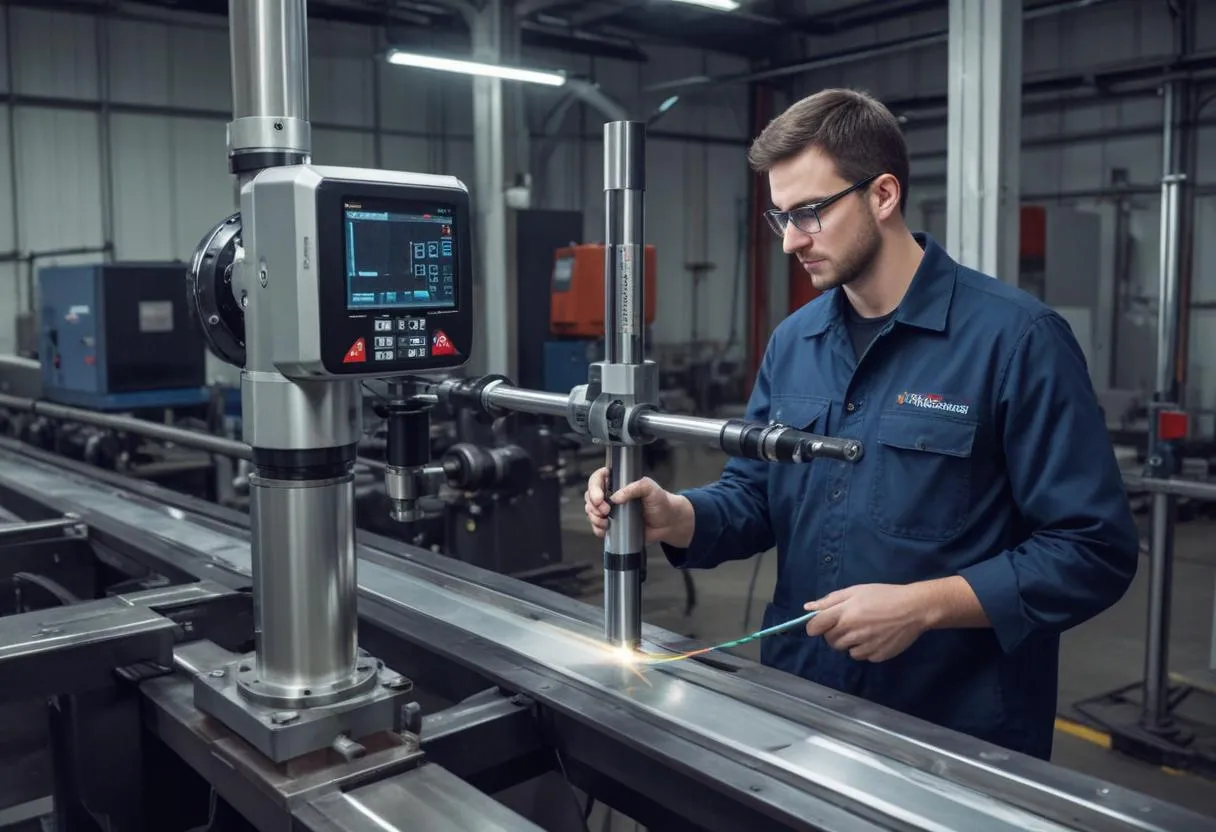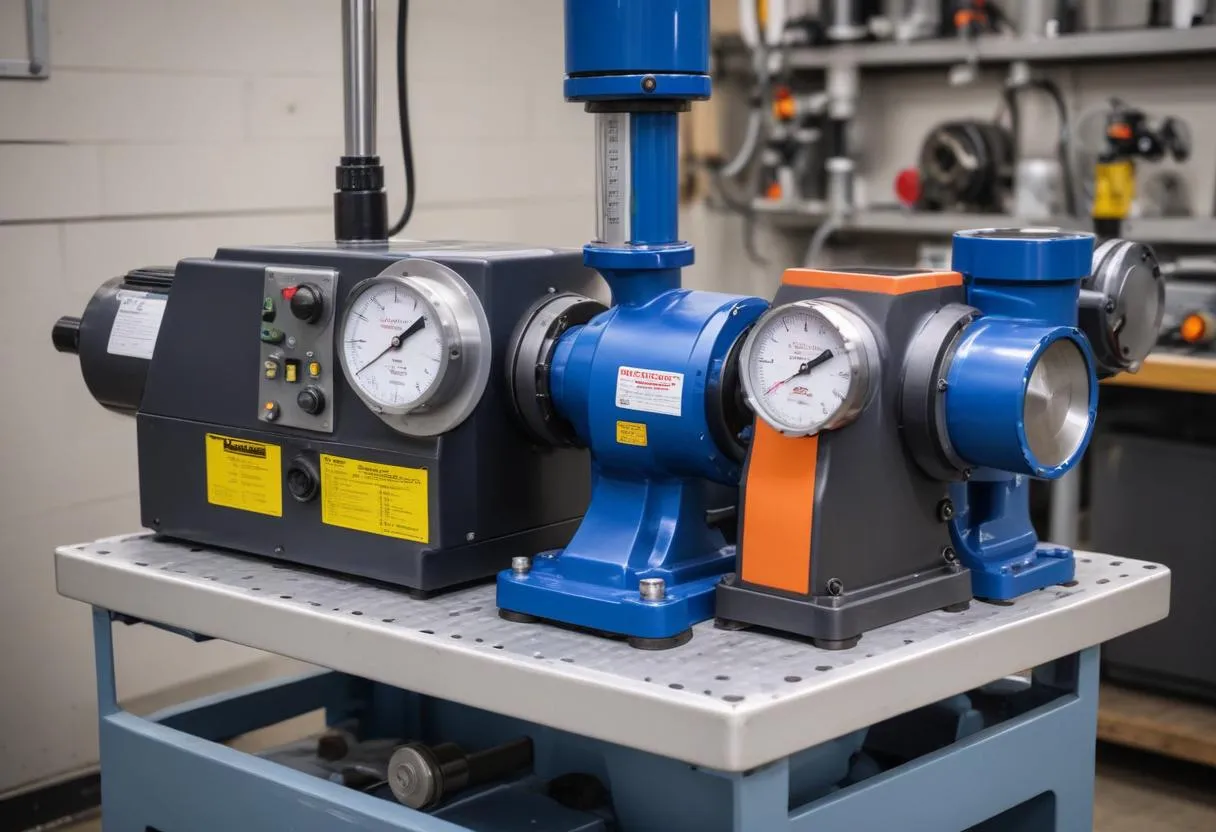 Shaft alignment in pump operations refers to the process of setting the rotational centers of two or more shafts so that they become co-linear at the operating temperatures and pressures. Proper alignment guarantees that the motor, pump, and other components function in a unified, efficient manner. Misalignment, conversely, can lead to excessive vibration, bearing and seal failure, and premature machinery breakdown.
Shaft alignment in pump operations refers to the process of setting the rotational centers of two or more shafts so that they become co-linear at the operating temperatures and pressures. Proper alignment guarantees that the motor, pump, and other components function in a unified, efficient manner. Misalignment, conversely, can lead to excessive vibration, bearing and seal failure, and premature machinery breakdown.
Types of Shaft Alignment:
Shaft alignment can be categorized into two primary types:
1. Parallel Alignment: This occurs when the shafts are parallel to each other across their horizontal or vertical plane. There should be no angular gap between the shafts.
2. Angular Alignment: In this alignment, the shafts are positioned at an angle to one another. Proper angular alignment ensures minimal stress during operation.
To determine the alignment of the shafts effectively, several techniques and tools are employed:
- Straight Edge or Ruler Method: A basic method where a straight edge is held against the coupling. It is a quick way to check alignment but less accurate than other methods.
- Dial Indicator: This measures the relative position of the coupling halves. One dial gauge measures the radial displacement and another measures axial displacement.
- Laser Aligning Devices: These are the most accurate tools for shaft alignment, employing a laser beam to determine alignment. They are easy to use and provide precise measurements.
Thermal Growth and Alignment:
One of the crucial aspects to consider in shaft alignment is the thermal growth of the equipment components during operation. As the temperature of the machinery increases, metal expands. Therefore, alignment must not only be performed at ambient temperatures but should also account for operational temperatures. Most advanced alignment systems have incorporated predictive tools that calculate the expected thermal growth and suggest alignment positions accordingly.
Importance of Precise Shaft Alignment:
Achieving precise shaft alignment is not merely a mechanical necessity but also a cost-saving practice in long-term pump operation. Here is how precise alignment impacts pump efficiency:
| Effect | Improvement |
|---|---|
| Vibration Reduction | Decreases wear and tear on bearings and seals, extending equipment life. |
| Energy Efficiency | Improper alignment can increase energy consumption by up to 15%. Proper alignment ensures optimal energy use and operation. |
| Maintenance Costs | Properly aligned systems require less frequent repairs, lowering maintenance costs over time. |
Data Collection and Analysis for Alignment:
To achieve optimal alignment, precise data collection and analysis are crucial. Technicians often use advanced geometric and rotational calculations to establish proper alignment parameters. This data, combined with the operational parameters of the equipment, such as load, speed, and operating temperature, helps in determining the exact needs for effective shaft alignment.
In the field of pump operation, understanding and implementing the fundamentals of shaft alignment are imperative. This foundational knowledge not only facilitates smoother operations but also optimizes operational efficiency and longevity of equipment.
Consequences of misalignment in pumps
The challenges brought on by misalignment in pumps can manifest in several detrimental ways, significantly affecting their operational efficiency and the longevity of the equipment. Here, we explore the key consequences of not maintaining proper shaft alignment in detail.
Increased Mechanical Stress and Wear:
Misalignment often leads to uneven distribution of load across the pump components. This imbalance causes increased mechanical stress and early wear and tear on crucial parts such as bearings, seals, and couplings. The abnormal stress can further extend to affecting other machinery interconnected with the pump, creating a cascade of mechanical issues.
Vibration and Noise:
One of the most immediate effects of misalignment is increased vibration. This vibration can be severe enough to be felt through the floor or heard as a constant humming or buzzing noise during operation. Continuous vibration accelerates the deterioration of component parts and can disrupt the stability and alignment of other machinery.
Seal and Bearing Failures:
- Bearing Failure: Bearings are designed to manage loads evenly and smoothly. Misalignment causes bearings to handle load improperly, leading to overheating and early failure.
- Seal Failure: Similarly, misalignment distorts the intended path of rotary seals, leading to abnormal leakage and contaminants entering the system, which compromises the entire operation.
Increased Energy Consumption:
A misaligned shaft does not transmit torque efficiently. To compensate for this inefficiency, pumps consume more power, increasing operational costs significantly. This inefficient power transmission can lead to up to 15% more energy consumption compared to well-aligned systems.
Operational Downtime and Costs:
With misalignment issues leading to frequent repairs or replacements of parts like bearings and seals, the operational downtime for maintenance increases. This not only impacts the productivity but also elevates the maintenance costs. In severe cases, misalignment can even lead to catastrophic pump failures, necessitating complete overhauls or replacements, which can be extremely costly.
Reduction in Pump Life and Performance:
Long-term misalignment undeniably diminishes the overall life expectancy of the pump. The continuous strain on the pump’s components decreases its performance over time, failing to meet the operational standards and output requirements.
By understanding the intricate and linked consequences of shaft misalignment in pump operations, maintenance teams can prioritize preventive maintenance practices and ensure alignment is checked and corrected regularly. Such proactive measures mitigate the risks of operational inefficiencies and machinery failures, promoting longer life spans and improved performance of pump systems.
Best practices for achieving accurate alignment
 Alignment Preparation and Cleanliness:
Alignment Preparation and Cleanliness:
Prior to initiating any alignment process, it’s crucial to thoroughly clean all parts involved in the alignment. Dirt, grease, or any foreign material on the pump base, shims, or around the coupling can lead to inaccurate readings and consequently improper alignment.
- Clean Base and Feet: Ensure that the pump base and motor feet are free of any debris or rust.
- Check for Equipment Condition: Inspect for damage such as bent shafts or worn couplings which might affect the alignment.
Use of Appropriate Tools and Equipment:
Choosing the right tools is essential for achieving accurate alignment. Laser aligners have become the preferred choice due to their precision and ease of use, but dial indicators can also provide good results if used correctly.
| Tool | Advantages |
|---|---|
| Laser Aligners | High accuracy, quick setup, and results that are easy to interpret. |
| Dial Indicators | Cost-effective and provide a good level of precision when correctly implemented. |
Alignment Techniques:
Here are some of the standard alignment methods that can be used depending on the specific requirements and available resources:
- Reverse Dial Method: Utilizes dial indicators at both ends of the coupling to measure and correct alignment errors.
- Rim and Face Method: Another technique using dial indicators where one measures the rim of the coupling and the other the face, providing two dimensions of misalignment (axial and radial).
- Laser Alignment: Involves placing a laser transmitter on one shaft and a receiver on the other. The laser provides visual feedback that helps in adjusting the alignment until the receiver indicates that the shafts are aligned.
Soft Foot Check and Correction:
Soft foot refers to a condition where all feet of the motor or pump do not sit evenly on the base, causing frame distortion when the bolts are tightened. This can significantly impact alignment accuracy.
- Check for Soft Foot: Use a dial indicator or feeler gauge under each foot to check for gaps between the foot and the base.
- Correct Soft Foot: Use shims to ensure all feet are supported properly before proceeding with the alignment.
Verification and Documentation:
After aligning the shafts, it is imperative to verify that the alignment is within acceptable tolerance limits. Running the system at a test speed allows for operational verification of the alignment.
- Record Readings: Document the final alignment readings for future reference.
- Schedule Follow-Up Checks: Alignment should be checked periodically and after significant machinery maintenance or disruptions.
By following these best practices, maintenance teams can ensure that pumps and related equipment are accurately aligned, thus minimizing the risk of failure and improving the efficiency and lifespan of the machinery. Incorporating these practices into routine maintenance can lead to a highly efficient, reliable, and cost-effective operation.